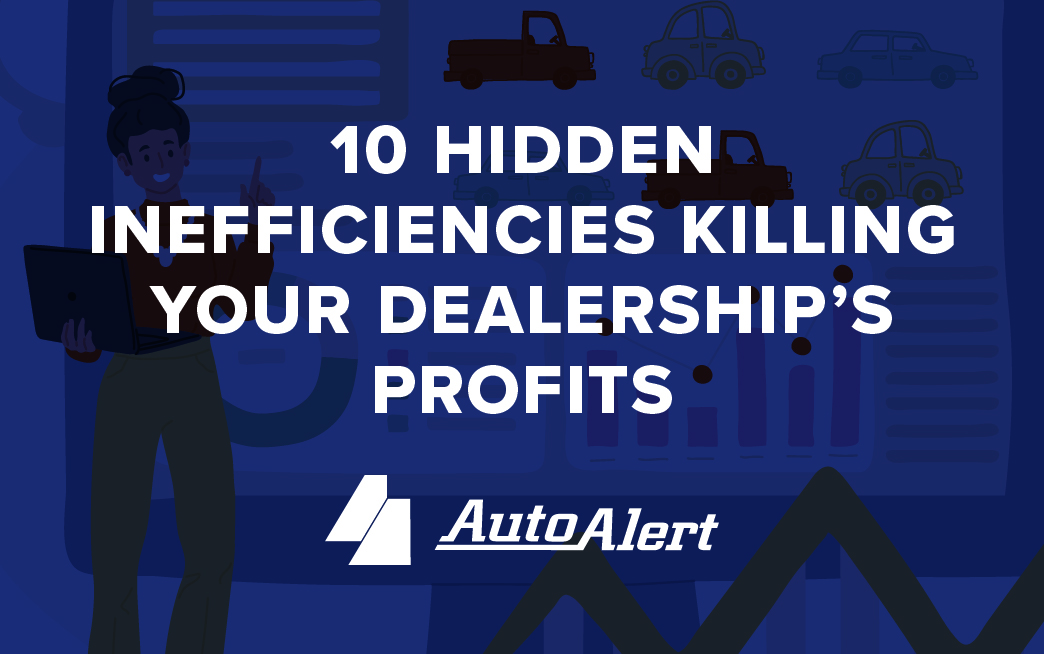

Artificial Intelligence Working Effectively for Your Dealership
(Data Science Blog Series, part 4)
This blog is the fourth article in our AutoAlert Data Scientist Editorial series.
This series delivers a crash course on defining data science terms and learning valuable uses of automotive software.
Predicting Customer Behavior
Data Science developed the ability to obtain a behavior prediction score. Each customer’s behavior prediction score is based on behavior patterns for predictability and likeliness to buy. The higher the score, the more likely the customer is in-market to purchase a vehicle. There are two types of customer scores; trade-in score and lead score.
A trade-in score is a customer already in a dealer’s database and scores the predictability of the customer trading in the current vehicle for a replacement vehicle based on past and current shopping behavior and other predictive analytics. A lead score applies to new CRM leads and is scored based on lead provider, customer internet behavior, and predictive analytics.
Anytime a customer engages with your dealership, through any buying actions such as online browsing of third-party websites, AutoAlert’s automated rules engine notifies the dealership and assigns them Time Sensitive Opportunity (TSO) and automatically adds it to a workflow. These TSOs can be email templates sent on behalf of the salesperson, the GM, or anyone else. Or TSOs can be personal touchpoints like phone calls or text messages.
Every time customers respond to dealer outreach, AutoAlert’s powerful recommendation engine learns more about how that single customer prefers to engage with your dealership. Over time, the engine will tell you exactly when and how to contact that customer, so you never have to task a salesperson with a pointless phone call again.
Artificial Intelligence Put to Work for the Dealer
AutoAlert’s Workflow Manager allows end-users to leverage customizable task generation based on TSOs and build rule-based follow-up and action templates. AutoAlert applications instantly generate activity when a dealer, user, or customer acts, such as a phone call or a customer’s reply to an email.
The Workflow Manager allows users to easily create workflows triggered by those actions with prescribed time-sensitive opportunities assigned to users and salespeople.
The AutoAlert solution is highly customizable for various time-sensitive tasks and different roles at the dealership. While the system is built with best practices and suggested workflows, any dealership can customize the system based on your needs.
Making the Data Even Smarter
AutoAlert provides self-learning data intelligence that filters through top opportunities, finding ready-to-buy customers with the inventory you need.
Our recommendation engine then provides a full 360-degree view of the customer and optimizes the best offers across the customer lifecycle.
This automated process brings many great opportunities, but where does a user start? AutoAlert has created AutoAlert’s Smart Workflow Artificial Intelligence (SWAI).
Predictive analytics, machine learning, historical buying patterns, customer behavior, and engagement tracking turn a list of top opportunities into today’s deals.
Smart Workflow AI filters for the most pressing opportunities and suggests the best communication pathway. AutoAlert’s workflow engine instantly provides ready-to-buy customers into your assigned team member’s inbox every day, removing excess noise and giving the user more information and clarity.
Users can start every day by logging in on any device, anywhere, and simply working on the daily work plan – knowing that every task is your next best opportunity.
Smart Workflow AI then determines both the best timing of the follow-up and the best mode of communication. Instead of waiting six months for a routine follow-up, the workflow may define that the dealership should follow up today based on machine learning data and recommend the best form of communication that the customer will likely interact with the dealership again.
For example, a user logs into the platform and sees a gold-colored notification for Alix Drew. Alix’s customer buying predictor is a score of 92 out of 100.
Based on AutoAlert’s predictive data, Alix can upgrade her vehicle and keep her payments about the same. We know that she has an open recall and needs to come in for service. Her car is also on the “Hot Trades” Wishlist, and GeoAlert shows she has physically been on a competitive dealership lot looking at the exact vehicle.
Smart Workflow AI then reviews Alix’s previous communication with the dealership and suggests a text message to Alix after 6 PM.
This information empowers your sales team. They have timely information on the customer and multiple points of discussion. They know the best time to reach Alix and the most likely mode of communication for her to respond.
AutoAlert’s testing data shows Smart Workflow AI customers are nearly 5X more likely to buy than any other customer in the dealer’s database, proving SWAI customers are golden opportunities for the dealer to follow up immediately.
AutoAlert CXM data is driven by the customers’ activities & behaviors. You receive a complete picture of your customers with real-time data that shows consumer research and predictive buying behavior. It connects the dots into a clear path of action and provides specific direction for each customer and accountability for your dealership teams.
AutoAlert CXM not only predicts customer behaviors but manages your dealership’s interactions and enhances customer experiences with dynamic, work-from-anywhere technology.




